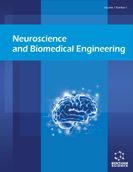Abstract
Background: Brain-machine interfaces (BMIs) are technologies that allow humans to interact with artificial devices. To support daily life by BMIs, it is necessary to reconstruct the motion information by measured EEGs signals. Our purpose is to estimate the force/torque information from the brain activity to help and support the human's daily life.
Methods: In order to extract the relationship between EEGs and elbow joint torque when a subject controls the robot arm, the features of the EEGs related to motion are extracted by twice short-time Fourier transform. And, we focus on the power spectral periodicities of alpha and beta wave. Further, the EEG-Torque linear model is established by principle component analysis (PCA). Results: We analyse the measured EEGs in movement to extract the relationship between EEGs and EMG signals, and further estimate the joint torque from the EEGs. The results show that the periodicity of alpha and beta wave variations at each measurement point have strong associations with the subject's movement. Based on this, we build a linear model representing the relationship between EEGs and EMG by PCA, and the EMG signals are successfully estimated from EEGs. This implies a great potential to use EEGs for supporting human's activities. Conclusion: Periodic changes of the power spectra relates to human moving at 20-25Hz in alpha band and 10-15Hz in beta band. From these results, the linear model between the EEGs and the joint torque which developed by principal component analysis are confirmed and it is used to estimate the joint torque. The validity of this approach is verified by experiments.Keywords: Brain machine interface, EEG, EEG-Torque linear model, principal component analysis.
Graphical Abstract
 10
10

